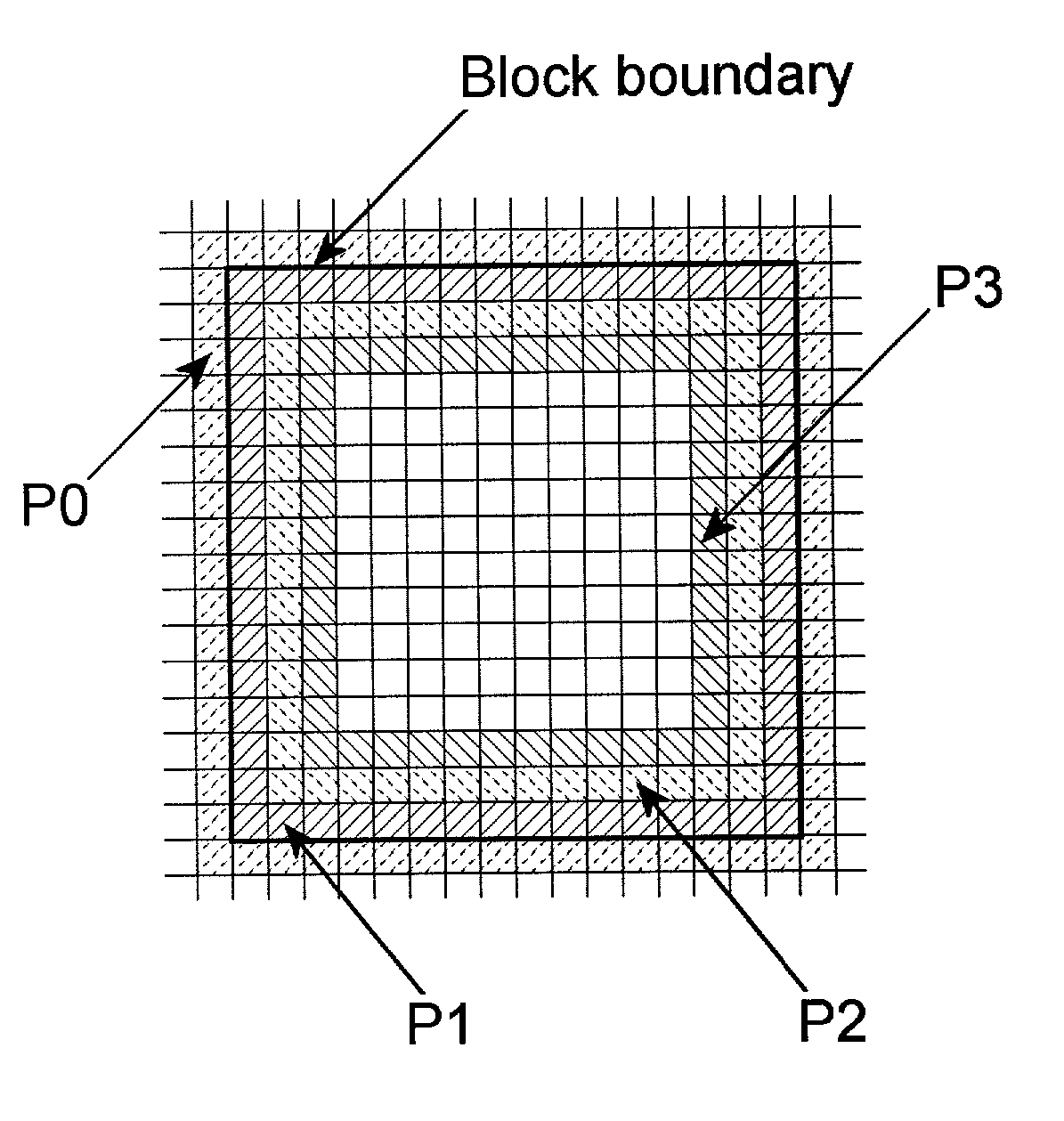Removal of block encoding artifacts
- Summary
- Abstract
- Description
- Claims
- Application Information
AI Technical Summary
Benefits of technology
Problems solved by technology
Method used
Image
Examples
Embodiment Construction
[0028]The practice of this invention operates on digital images. A digital image comprises a collection of picture elements or pixels arranged on a regular grid. A gray scale image is represented by a channel of specific brightness values at individual pixel locations. Such a channel may also be represented as a color palette, for example containing 256 shades of gray. Gray scale images contain only achromatic colors, in other words those colors without a specific hue and with a zero saturation. A color image contains several channels, usual three or four, to describe the color at a pixel. For example, there may be red, green and blue (RGB) channels, or cyan, magenta, yellow and black (CMYK) channels. Each channel again contains brightness values representing the amount of color at each pixel. A color image may also be represented in palettized form. Such images contain chromatic colors, which possess both hue and saturation. The invention is concerned with both monochromatic images...
PUM
 Login to View More
Login to View More Abstract
Description
Claims
Application Information
 Login to View More
Login to View More - R&D
- Intellectual Property
- Life Sciences
- Materials
- Tech Scout
- Unparalleled Data Quality
- Higher Quality Content
- 60% Fewer Hallucinations
Browse by: Latest US Patents, China's latest patents, Technical Efficacy Thesaurus, Application Domain, Technology Topic, Popular Technical Reports.
© 2025 PatSnap. All rights reserved.Legal|Privacy policy|Modern Slavery Act Transparency Statement|Sitemap|About US| Contact US: help@patsnap.com



